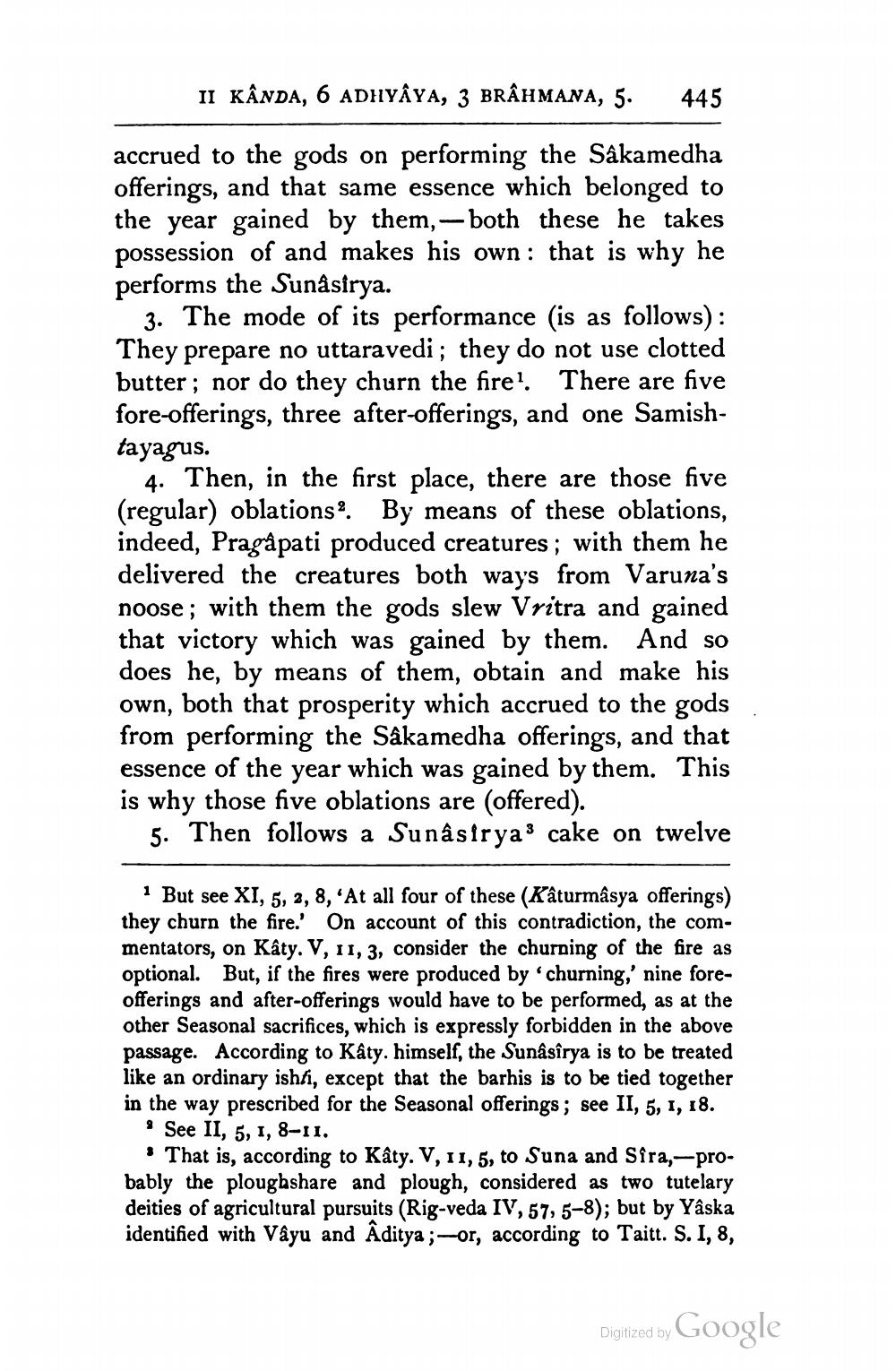________________
II KÂNDA, 6 ADHYAYA, 3 BRÂHMANA, 5.
445
accrued to the gods on performing the Sâkamedha offerings, and that same essence which belonged to the year gained by them, - both these he takes possession of and makes his own : that is why he performs the Sunâsirya.
3. The mode of its performance (is as follows): They prepare no uttaravedi; they do not use clotted butter; nor do they churn the fire'. There are five fore-offerings, three after-offerings, and one Samishtayagus.
4. Then, in the first place, there are those five (regular) oblations. By means of these oblations, indeed, Pragâ pati produced creatures; with them he delivered the creatures both ways from Varuna's noose ; with them the gods slew Vritra and gained that victory which was gained by them. And so does he, by means of them, obtain and make his own, both that prosperity which accrued to the gods from performing the Sakamedha offerings, and that essence of the year which was gained by them. This is why those five oblations are (offered).
5. Then follows a Sunâsiryas cake on twelve
But see XI, 5, 2, 8, 'At all four of these (Kâturmâsya offerings) they churn the fire. On account of this contradiction, the commentators, on Kâty. V, 11, 3, consider the churning of the fire as optional. But, if the fires were produced by churning,' nine foreofferings and after-offerings would have to be performed, as at the other Seasonal sacrifices, which is expressly forbidden in the above passage. According to Katy. himself, the Sunâsîrya is to be treated like an ordinary ishti, except that the barhis is to be tied together in the way prescribed for the Seasonal offerings; see II, 5, 1, 18.
• See II, 5, 1, 8-11.
• That is, according to Kâty. V, 11, 5, to Suna and Sîra,-probably the ploughshare and plough, considered as two tutelary deities of agricultural pursuits (Rig-veda IV, 57, 5-8); but by Yâska identified with Vậyu and Aditya ;-or, according to Taitt. S. I, 8,
Digitized by Google




